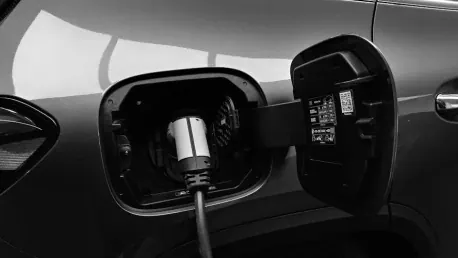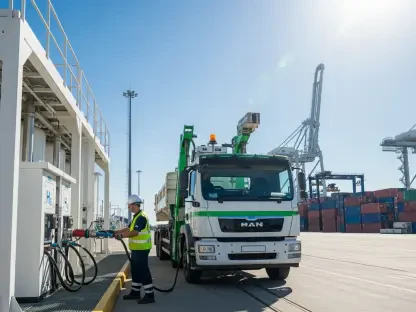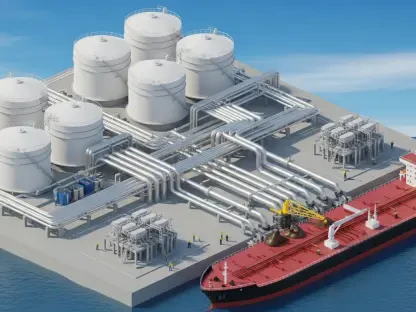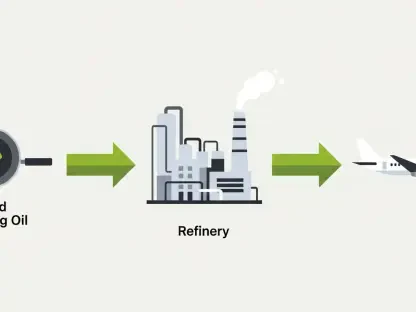The automotive industry is at a crossroads as it seeks sustainable solutions to reduce greenhouse gas emissions and combat climate change. Battery-electric vehicles (BEVs) currently lead the charge, offering a greener alternative to traditional internal combustion engine (ICE) vehicles. However, synthetic fuels, or e-fuels, are emerging as a potential contender, presenting an alternative path to achieving carbon neutrality. This article investigates the viability of e-fuels, examining their developmental status, commercial feasibility, and the hurdles they must overcome to compete with BEVs in the race for a greener future.
The Promise of E-Fuels
E-fuels are synthetic fuels produced by combining green hydrogen and captured carbon dioxide (CO2), resulting in carbon-neutral energy sources. Their primary advantage lies in their compatibility with existing ICE vehicles and infrastructure, thus reducing the need for extensive modifications. This ability to integrate seamlessly with the current industry setup makes e-fuels an attractive option for reducing emissions without embarking on a complete overhaul of automotive technology. One of the prominent advocates for e-fuels is Porsche, which has been at the forefront of developing this technology under the leadership of Karl Dums. Porsche’s significant investment reflects the industry’s growing confidence in e-fuels’ potential as a sustainable alternative to BEVs. E-fuels offer the advantage of utilizing existing ICE technology while simultaneously reducing greenhouse gas emissions.
The creation of e-fuels involves intricate processes, including the electrolysis of water to produce hydrogen and the capture of CO2. The synthesized hydrogen and CO2 are then combined to form e-fuels, which can be used in ICE vehicles just like traditional fuels. The environmental benefit of e-fuels is evident: they can significantly reduce emissions without requiring the complete infrastructure overhaul that BEVs necessitate. By leveraging the established ICE infrastructure, e-fuels present a compelling case for a transitional technology that can curb emissions while the industry gradually shifts to more sustainable alternatives.
Market Potential and Regulatory Support
The report by technology analysts IDTechEx, “Sustainable Biofuels & E-Fuels Market 2025-2035: Technologies, Players, Forecasts,” points to the substantial growth potential for e-fuels in the near future. According to senior technology analyst Chingis Idrissov, the e-fuels market, albeit limited in its current deployment, shows promise due to evolving policy frameworks, continuous technological advancements, significant corporate investments, and innovative endeavors. The automotive sector stands as a key pillar for the deployment of e-fuels, awaiting a potential boost from upcoming regulatory discussions. The European Union’s planned 2026 consultation on carbon-neutral fuels for ICE-powered vehicles is a pivotal moment that could permit the continued sales of such vehicles beyond 2035, potentially accelerating e-fuel adoption.
Proponents of e-fuels assert that their overall emissions are lower than those of BEVs, especially when considering secondary emissions factors like tire wear from the heavier BEVs. The advocates argue that the minimal emissions advantage, coupled with the use of existing infrastructure, solidifies e-fuels’ position as a viable alternative. Governments worldwide, including the United States, are recognizing the potential of e-fuels. In the U.S., the Clean Fuel Production Credit under the Inflation Reduction Act provides incentives for e-fuel production, laying a foundation for e-fuels to gain traction. Meanwhile, countries like the UK, Japan, China, and Canada are enacting similar regulations to champion e-fuels as part of their energy transition strategies.
Corporate Investments and Technological Advancements
The growing confidence in e-fuels is mirrored by significant corporate investments aimed at transitioning e-fuels from demonstration projects to commercial-scale production. Porsche’s investment exceeding $100 million underscores this shift, while Infinium, backed by $200 million from Brookfield Asset Management for Project Roadrunner in Texas, reiterates the commercial viability of e-fuels. Additionally, HIF Global’s receipt of $220 million in equity investments from Japanese companies such as MOL and Idemitsu Kosan further accentuates the burgeoning interest in e-fuels. Twelve, another player, raised an impressive $645 million in a funding round led by TPG Rise Climate, highlighting the substantial financial commitment to this technology.
E-methanol, a type of e-fuel, has swiftly ascended as a key player in the landscape due to its versatility and compatibility with existing infrastructure. Expected to surpass 15 million tons of annual production capacity globally by 2030, e-methanol demonstrates significant potential. The production process of e-methanol leverages established technologies such as water electrolysis, carbon capture, and methanol synthesis, making it commercially viable in the immediate term. The ability to work within existing frameworks sets e-methanol apart as a frontrunner in the e-fuels sector, poised to lead the way in sustainable transport.
Challenges and Barriers to Adoption
Despite the optimistic projections, e-fuels face considerable obstacles that need addressing for widespread adoption. One of the major challenges is the high production cost. Aviation-grade e-fuel, known as E-SAF, currently costs four to ten times more than conventional jet fuel, necessitating substantial government subsidies to achieve commercial competitiveness. Efficiency concerns also hinder e-fuel allure where direct electrification is feasible. The production process involves significant energy losses, reducing e-fuel’s attractiveness in such contexts. Additionally, infrastructure limitations and the need for vast amounts of renewable electricity pose hurdles to scaling e-fuel production.
Sourcing CO2 presents specific challenges as well. Currently, biogenic sources dominate due to lower capture costs, but as production scales up, these sources may face availability constraints. Moreover, the European Union mandates a shift from industrial CO2 emissions to carbon removal technologies by 2040. Direct air capture, although prohibitively expensive at present ($600-$1,000 per ton of CO2), is expected to become more affordable ($200-$400 per ton) by 2030. The confluence of these factors underscores the need for a multifaceted approach that includes policy support and innovative technological solutions to navigate the barriers facing e-fuels.
The Path Forward for E-Fuels
As the automotive industry pushes towards a greener future, understanding the roles of both BEVs and e-fuels becomes crucial. The exploration includes looking at advantages, production methods, and scalability of e-fuels, alongside the established benefits of BEVs. Only through such comprehensive scrutiny can the industry determine the best way forward in its quest for sustainability and climate protection.









